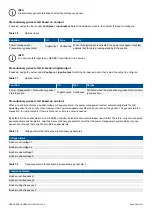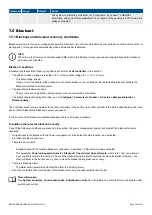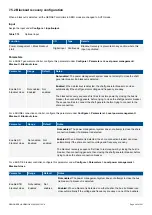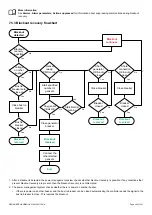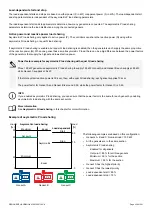
Load-dependent stop
The PMS calculates what the PMS available power would be if the connected genset that is last in the priority order is stopped. If
this is higher than the
Load-dependent stop
limit for the specified time, that genset will be stopped.
Example
The system consists of two gensets, each with a nominal power of 1500 kW. The load-dependent start set point is 150 kW. The
load-dependent stop set point is 300 kW.
The load-dependent start delay (t1) is 1 minute.
The load-dependent stop delay (t2) is 5 minutes.
INFO
The load-dependent delay default is 30 seconds. The values in the example are for clarity.
0
300
600
900
1200
1500
1800
2100
2400
2700
t2
t1
2
4
3
1
6
5
7
Power
[kW]
time
Nominal power
Consumed power
Available power
Start limit
Stop limit
1. One genset is running and the PMS nominal power is 1500 kW. The consumed power rises, and so the PMS available power
drops.
2. The PMS available power is 150 kW. The load-dependent start timer starts.
3. The PMS available power remains below 150 kW, and so the PMS sends a command to the second genset to start.
4. The second genset starts, and both gensets supply the load.
5. The consumed power drops to 1200 kW. The PMS available power is now 1800 kW. This is equal to the nominal power of the
genset that is last in the priority order plus the load-dependent stop set point. Therefore, the load-dependent stop timer starts.
6. The PMS available power remains above 1800 kW, and so the PMS send a command to the second genset to stop.
7. The second genset stops, and the first genset supplies the load.
7.4.7 Power method and hysteresis
For the power method:
Hysteresis = Load-dependent stop limit - Load-dependent start limit
INFO
For stable operation, the load-dependent stop limit must be larger than the load-dependent start limit.
DESIGNER'S HANDBOOK 4189340911K UK
Page 235 of 521




















